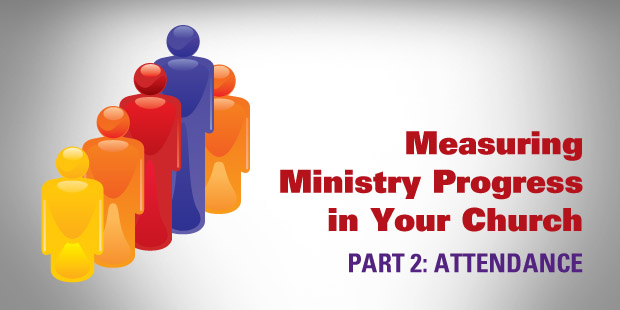
Measuring Ministry Progress in Your Church, Part 2: Attendance
Numbers matter to God, because people matter to God.
In a previous post I introduced the importance of measuring progress in ministry. Today we look at the measurement of attendance.
Measuring weekly attendance at church is the perhaps the easiest measurement to make, because it’s as easy as doing a head count.
From week to week, you can see if more or less people are coming to church, and compare these numbers over time.
Although there is a reluctance in some circles to talk about attendance numbers, more people coming to church and hearing the gospel is a good thing. (Perhaps this speaks more to the Australian culture than other cultures, but a church that is growing doesn’t feel to be ashamed, nor do others need to assume that a church that is growing has compromised and ceased preaching the gospel).
“Every number has a name, every name has a story, every story matters to God.”
Numbers matter to God, because people matter to God. You only need to look at the parable of the lost sheep to see that individuals matter to God (and particularly those who are lost).
Of course, small attendance in and of itself doesn’t indicate a problem. Likewise, declining attending church doesn’t necessarily raise alarm bells – perhaps you’re preaching the gospel more clearly and it’s offending people and they’re leaving.
Why aren’t more people coming to church?
However, if fewer people are coming to church, it’s worth asking the question – why?
- Has the church stopped praying for growth and for people to be saved?
- Have people stopped inviting their friends?
- Is the preacher getting lazy and preparing poorly?
- Is the preaching addressing only a certain group of people (I recall a pastor at a previous church who only gave illustrations about his children – not great when the majority of the church were teenagers!).
- Is the church building so full that people don’t think there’s room for them?.
There are good questions to ask when attendance starts to decline.
3 reasons to be cautious about increased attendance
On the flip side, increasing numbers in attendance need to be viewed with caution for at least 3 reasons:
- Transfer growth. Church attendance can increase as Christians migrate from another church. There are good reasons for church migration (moved to the area, no kids ministry in their church, etc.), but if this is the primary reason a church is growing, it’s not healthy. At the heart of church growth should be new people (the unchurched and the dechurched) coming to hear the good news about Jesus. An increase in attendance because of transfer growth isn’t necessarily a reason to celebrate.
- Back door departures. The number of people in attendance needs to be considered along with the number of people leaving. If attendance levels are high, but there is also a large number of people leaving the church, the church is obviously attracting new people, but failing to keep them (or attracting at the expense of longer-term members). In this case, an increase in attendance isn’t necessarily a reason to celebrate either, if the back door is just as wide as the front door.
- Frequency of attendance. Similar to the point above, attendance levels can be increasing if lots of new people are coming, but this must be considered along with the frequency with which members are attending church. On average, are members coming more regularly – 2 out of 4 Sundays, 3 out of 4 Sundays, or even 4 out of 4 Sundays? Or are they attending less frequently? High attendance from newcomers can mask a problem of members not being committed to church.
That said, attendance is a great starting measurement, and one that every pastor I have spoken with is using. I suggest breaking down this measure into the following:
- Measurement #1. The number of adults and children at church this weekend.
- Measurement #2. The number of adults and children who attended church this weekend, who aren’t currently attending another church.
- Measurement #3. The frequency of attendance of members (how many Sundays in a month the average member is at church). To measure this, you need to be using a church member database that enables you to mark the ‘roll’ each week. We use Elvanto at Church by the Bridge.
- Measurement #4. The number of people who were attending, but aren’t any more (i.e. have been officially removed from the church roll).
- Measurement #5. The number of unidentified regular attenders. This is helpful for putting on the agenda follow up of people who have been coming for a while, but who are unknown and not yet connected.
Reviewing these numbers over time is more helpful than comparing from week to week. Like political polls, the numbers go up and down, but its the trends over time that are worth looking at.
As Al Stewart explains:
“You don’t grow week to week, you grow year by year…comparing the same months of different years, will give you a proper picture of what is happening”.
Read Part 1 of this series here.
Read more from Steve here.

Tags: Attendance, Decline, Growth, Multiplication, Steve Kryger













